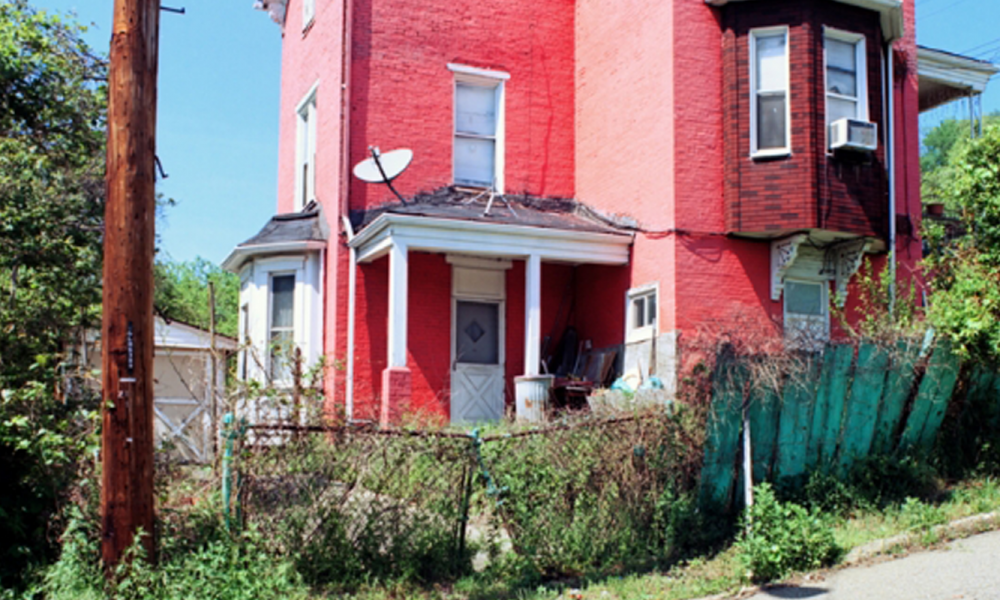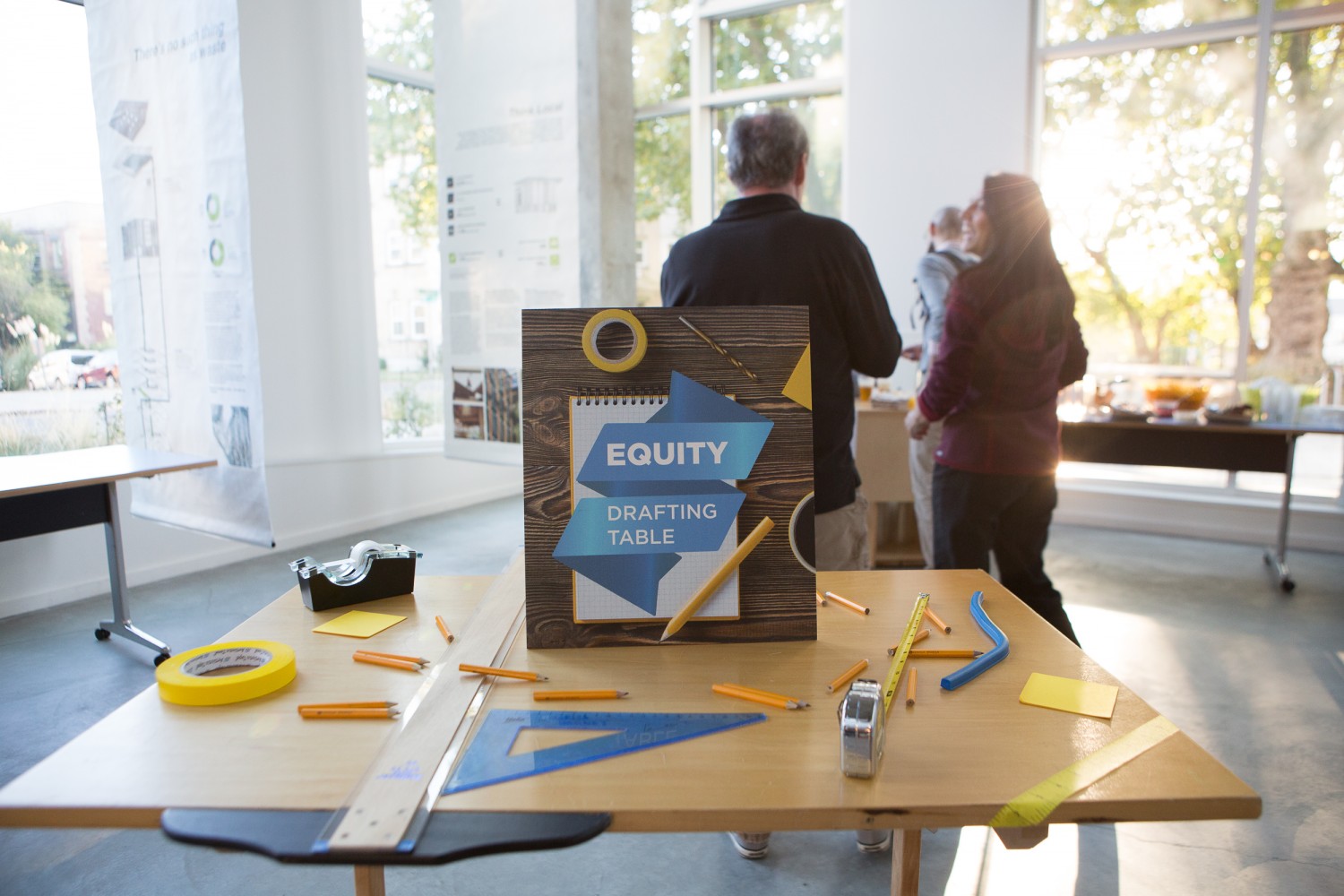Pittsburgh’s Hazelwood neighborhood has suffered in recent decades as American manufacturers have sent operations overseas and shuttered their U.S. factories. Pittsburgh, once known for its steel production, has transformed itself in the 21st century into a mecca for technology companies, with Google, Intel, Apple, and IBM siting facilities in the city—but by and large, Hazelwood has been left behind by the boom. As jobs burgeoned in wealthier, whiter areas of the city, jobs in Hazelwood—where 45% of residents are black and one in every four people lives in poverty—have trickled out. Pittsburgh’s last steel mill, based in Hazelwood, shut its doors in 1998.
Dr. Nina Baird, Assistant Professor of Architecture at Carnegie Mellon University (CMU) entered into the setting several years ago. Baird has been studying neighborhoods like Hazelwood and trying to understand their plights from a variety of perspectives: racial segregation, urban blight and gentrification among them. Over time, and after some stumbling, she has developed a relationship with the community; enough to visit Hazelwood with her students to discuss neighborhood issues and hopes as the residents see them. The Hazelwood community is now helping Dr. Baird and her students create a case study for collaborative redevelopment. The students are learning how to listen to the community first, and then using an amalgamation of sustainable architecture, affordable housing, gatherings and workshops, they recommend design solutions to meet the resident’s needs. Baird is hopeful that the fusion of her students’ passion with that of the residents of Hazelwood will yield positive results for the community.
The Carnegie Mellon crew, though, quickly learned that supporting residents in their efforts to revive their neighborhood would be no small undertaking. Hazelwood’s last grocery store folded in early 2009, and the community quickly became a food desert. In recent years, food deserts have become emblematic of the injustice of America’s food economy: as grocery stores and markets vacate a neighborhood, the only food left is processed food found in convenience stores. Hazelwood residents travel miles from home to purchase lower-priced groceries, and residents with little mobility seldom get fresh food. Food deserts often hit minority communities the hardest.
What’s more, aging industrial zones (termed “brownfields”)—such as those where steel mills were once located—are often heavily polluted. The coke ovens, furnaces and rail yards of Hazelwood were never clean operations, and even abandoned, may still threaten public health.
In 2013, when Dr. Baird received an Alcoa Foundation Pillars of Sustainable Education grant, CMU students began sitting down with Hazelwood residents and learning the neighborhood’s story. What struggles do people face? What memories of the community did they hold dear? What do they want to see in the future? Racial divides in the neighborhood are still prominent, and residents are frustrated with many nonprofits that come into the neighborhood to help without consulting the residents first. Regardless of good intention, those who cannot relate to the community demographics will not be able to grasp the neighborhood’s plight.
That same year, for the first class Dr. Baird taught about Hazelwood, students advised ACTION Housing, Inc., a local affordable housing group, in the sustainable renovation of several buildings. “There’s a learning curve regarding U.S. building methods and sustainable renovation,” said Dr. Baird, explaining that most CMU graduate students come from rapidly developing countries where renovating buildings is rare—old buildings are likelier to be razed to make way for new, larger ones. In Hazelwood, students got first-hand experience evaluating old and, in places, dilapidated buildings: ACTION Housing will redevelop an old grocery as well as the Spahr Building, a former variety store, for the benefit of the community. The students’ role was to advise ACTION about more sustainable materials and methods on such factors as insulation, windows, lighting and appliances. In the process, says Dr. Baird, they learned a lot about renovating old masonry and about certain stores’ specific needs. Today, a bakery is slated to move into the old grocery store, while the Spahr building will become home to Pittsburgh Community Kitchen, an organization that prepares food and trains food service workers, and will offer sit-down dining in Hazelwood. ACTION is also courting tenants for the upper floors of the building.
One of the first lessons of working in Hazelwood has been the understanding that the community’s largest concerns aren’t necessarily what Baird had on her agenda when she first began volunteering in the community. Prior to receiving the Pillars of Sustainability grant, Baird had led workshops in various cities on weatherizing one’s home for monthly utility savings. Those workshops were successful, she said, but in Hazelwood she soon realized that home renovation was the least of residents’ concerns. “People are trying to make ends meet,” explains Dr. Baird; their priorities center around putting food on the table and paying next month’s rent. Any up-front costs associated with weatherization would be cost prohibitive. Residents are also tired of outside groups coming into the community to help without consulting residents about community needs.
So Dr. Baird and her students set about talking to Hazelwood residents and getting to know the local landscape. What arose were collaborations with locals instead of impositions upon them—a lesson, surely, for all architects interested in sustainable design. The CMU crew offered classes on how to use the Internet, equipping residents with marketable online skills. They also taught Geographic Information System (GIS) software to teens, as software is used in many professional environments, and offered map-reading classes for children. CMU students also offered a bike repair workshop for residents and local police donated bikes for repair and use. The bike workshop was so successful that it will occur again in 2016. More recently, CMU students have offered their own version of Operation Better Block—a community gathering to clean up debris, plant trees, bushes and flowers, repair concrete foundations and sidewalks, and reroute storm water. In November, Hazelwood hosted the debut of CMU’s digital fabrication trailer, providing the community with information about technology and jobs in building design and construction and working alongside a group of veterans providing construction skills for neighborhood projects.

Today, Hazelwood residents are expressing concerns over the rate at which old houses are being demolished. The CMU architecture crew doesn’t see their job as pushing for new development, but rather as safeguarding the structures and community that already exist. The renovation of the old grocery and the Spahr building, in line with such a sustainability plan, are scheduled for completion in mid-2016.
“It’s a work in progress,” admits Baird. But similar to almost all work in collaborative community redevelopment, “good work builds on itself and can inspire more hope and creativity. My own hope is that everyone involved in these projects, the students and the residents, recognizes his or her ability to be a change maker and to help shape a better future.”
The work presented in this article is part of the Pillars of Sustainable Education program that funds universities to support the realization of community-based projects to explore innovative uses of sustainable materials and design. More information about the program – made possible by Alcoa Foundation – can be found at pillarssustainableeducation.org


